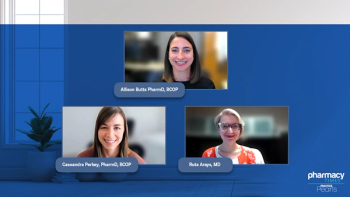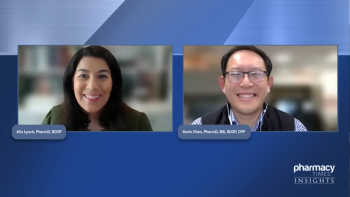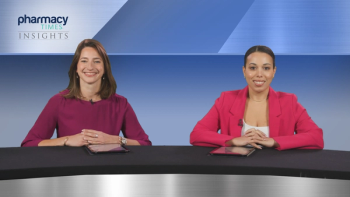
Challenges in Treating Resistant CP-CML or Ph+ ALL
Brandon Dyson, PharmD, BCOP, BCPS, reviews the challenges in treatment of resistant chronic myeloid leukemia and Philadelphia chromosome-positive ALL.
Episodes in this series

Brandon Dyson, PharmD, BCOP, BCPS: With TKI [tyrosine kinase inhibitor]-resistant chronic-phase CML [chronic myeloid leukemia] or Ph [Philadelphia chromosome]-positive ALL [acute lymphoblastic leukemia], resistance is always bad. It can become particularly challenging because although we’ve got some really good options, both in the upfront setting and in the second- and third-line setting with CML and Ph-positive ALL, when you start getting resistance mutations, it often wipes out an entire class of medications. Again, we keep talking about T315I mutations, but it’s very notable because it wipes out 4 drugs that are completely out of the paradigm. That’s a challenge. When a patient’s not meeting their goal, again, we don’t typically need to check chronic phase, we don’t need to check for mutational burden up front. You probably would consider it if they presented in the accelerated or in the acute phase, then it might make sense. Most patients don’t present that way, but you might consider checking for mutational burden then, but as they’re not making their milestones, we want to check for that mutational burden.
I think that’s particularly important because we’ve seen second-generation cycling happen before. That was a strategy that existed when we weren’t testing, where the typical patient might have started on imatinib and then didn’t make their milestone, so let’s put them on dasatinib. And they either are intolerant or that’s not making their goals, so let’s switch them over to bosutinib or to nilotinib. That cycling between those second generations, a lot of the same mutations knock out all those drugs. A T315I mutation is very notable for it. But there are other mutations that are better shared, that would exclude a patient from all the second-generation TKIs. So, cycling isn’t a very viable strategy, in my opinion at least. I think it’s better to go and see what the actual resistance panel looks like. Because otherwise, we’re giving a patient an ineffective therapy that’s very expensive. It’s a waste of time, it’s a waste of money, and it’s going to give the patient a worse outcome. That’s a challenge. It’s a real challenge to figure all of that out.
But generally speaking, figuring out what the resistance panel is once we’ve got that loss of control, I think is the best strategy. That helps to at least mitigate some of the challenge of having resistance to TKIs. It doesn’t mitigate all of it because TKIs are the cornerstone of our therapy. So when we start losing those, treating CML is challenging at this point. But it’s exciting to start seeing some options there that are showing up in the third line and beyond.
Transcript edited for clarity.
Newsletter
Stay informed on drug updates, treatment guidelines, and pharmacy practice trends—subscribe to Pharmacy Times for weekly clinical insights.














































































































































































































